AI Card Grading – Automate Sports Cards Pre-Grading
An in-depth look into AI card grading by Ximilar individually evaluating centering, edges, corners, and surface according to PSA or Beckett.

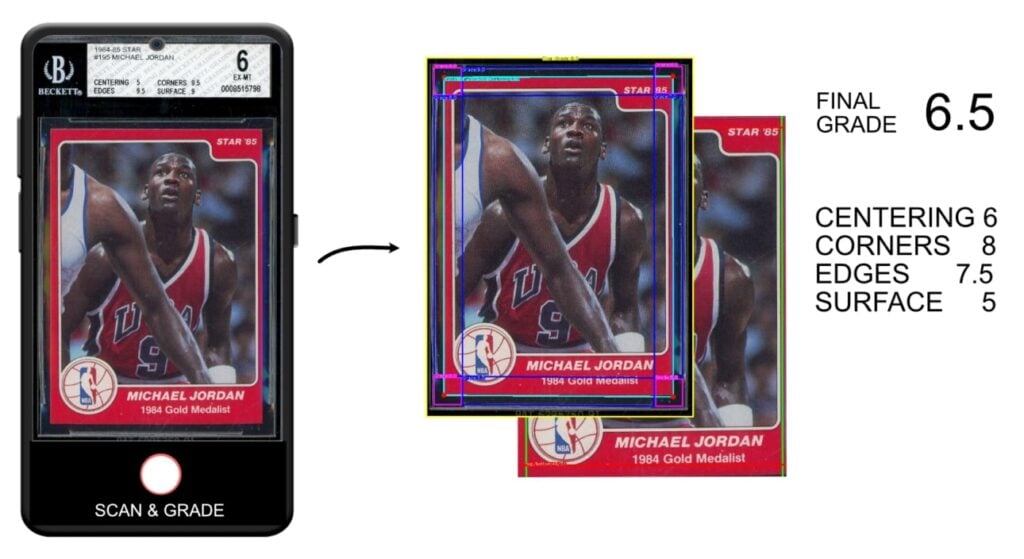
In my last blog post, I wrote about our new artificial intelligence services for trading card identification. We created new API endpoints for both sports card recognition and slab reading, and similar solutions for trading card games (TCGs). Such solutions are great for analyzing and cataloguing a large card collection. I also briefly described our card grading endpoint, which was still in development at that time.
Today we are releasing three public API endpoints for evaluating card grade, centering and card condition with AI:
- Card Grading – the most complex endpoint that evaluates corners, edges, surface and centering
- Card Centering – computing just the centering of the card
- Card Condition – simple API for getting condition of the card for marketplace (ebay) submission
In this blog post, I would like to get more in-depth about the AI card grading solution. How we built it, what are the pros and cons, how it is different from PSA grading or Beckett grading services, and how you can use it via REST API for your website or app.
AI Card Grading Services as API
With the latest advances in artificial intelligence, it is becoming increasingly common in our daily lives, and collectible cards are a field that doesn’t get left behind. A lot of startups are developing their own card grading, identification, scanning and documenting systems. Some of them were already successfully sold to big players like eBay or PSA. Just to mention a few:
CollX raises $5.5M to scan and evaluate the value of trading cards
eBay acquires several startups from the collectors industry like TCGplayer and 3PM Shield LLC
Collectible card trading platform Alt raises $75M
PSA Acquires Genamint to introduce Next-Generation Grading process
AI trading card startup Ludex raises $8M
To understand why card grading is so popular, let’s look at the standard grading process and how the industry works.
Standard Grading Process
Card grading has gained widespread popularity in the world of collectibles by offering a trusted way to assess trading cards to collectors. It’s a method that gives a fair and unbiased evaluation of a card’s condition, ensuring its authenticity and value. This appeals to both seasoned collectors who want to preserve their cards’ worth and newcomers looking to navigate the collectible market confidently.
The process involves sending cards to experts who carefully inspect them for qualities like centering, corners, edges, and surface. The standard grading process for trading cards involves these key steps:
Submission: Collectors send their cards to grading companies.
Authentication: Cards are checked for authenticity.
Grading: Cards are assessed for condition and assigned a grade from 1 to 10 on a grading scale by an expert.
Encapsulation: Graded cards are sealed in protective holders.
Labelling & Certification: Labels with card details and grades are added. Cards’ information is recorded for verification. Special labels (such as fugitive ink, QR codes, or serial numbers) are introduced to prevent tampering.
Return/Sale: Graded cards are returned to owners or sold for higher value.
Costs of Grading Services
The price for submitting cards and their grading depends on the company and the card. For example, the minimal grading price per card by PSA (Professional Sports Authenticator) is 15 USD, and it’s much more for more expensive cards.
You can pay hundreds of dollars if you have some rare baseball card from Topps or non-sports cards from Magic The Gathering or Yu-Gi-Oh! If your modern card collection contains hundreds of cards, the pricing can reach astronomical values. Of course, grading often makes the card’s value higher, depending on its condition and grade.
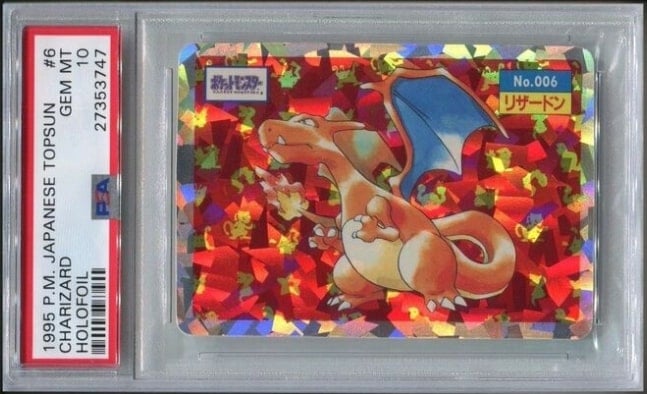
Pros And Cons of Classic Grading
Besides its costliness, classic grading has several other drawbacks:
- It is a time-consuming offline process that is not particularly ideal for large-scale grading of whole collections.
- Some grading companies would only grade cards with minimum submission value (declared value that is used for insurance).
- Also, customers can usually submit only cards from popular series such as Pokémon, Magic The Gathering, Yu-Gi-Oh!, Sport Topps cards, and Sport Panini cards.
Of course, there are also advantages – like a physically sealed slab with a graded card, confirming its authenticity, and grading done by experts who can look at a card from all different angles and not just from a single image.
Nevertheless, there are a lot of steps involved in card grading, and the entire process takes a lot of time and effort. AI grading can help with the entire workflow, from authentication to grading and labelling.
Computer vision can easily and consistently spot printing defects, analyze corners and edges individually and compute centering in a matter of seconds and for a fraction of the price.
Introducing Online AI Card Grading REST API Service
Fast & Affordable AI Card Grading
Our intention is by no means to replace expert grading companies like PSA, BGS, SGC or CGC with AI-powered card grading. We would rather like it to be a faster, more consistent & cheaper alternative for anyone who needs bulk pre-grading of their collections.
One use case for our AI grading service is to use it to automate the estimation of the declared value of the card. A declared value is the estimated value of the collectible card after PSA has graded it (read PSA’s explanation here).
First, you will submit your card for grading by just sending the photo to our API. After obtaining a grade from our service, you can use our visual search system or card ID for a price guide. Actually, you will not only get the final grade of the card but a detailed grading breakdown (for edges, corners, centering, and surface). Then you can decide by yourself if you want to spend more money for physical grading or to sell it on eBay.
How Do We Train AI to Grade Cards?
To build an AI grading system powered by computer vision and machine learning techniques, we needed a lot of data that imitated real-world use cases (usually user-generated content such as smartphone pictures).
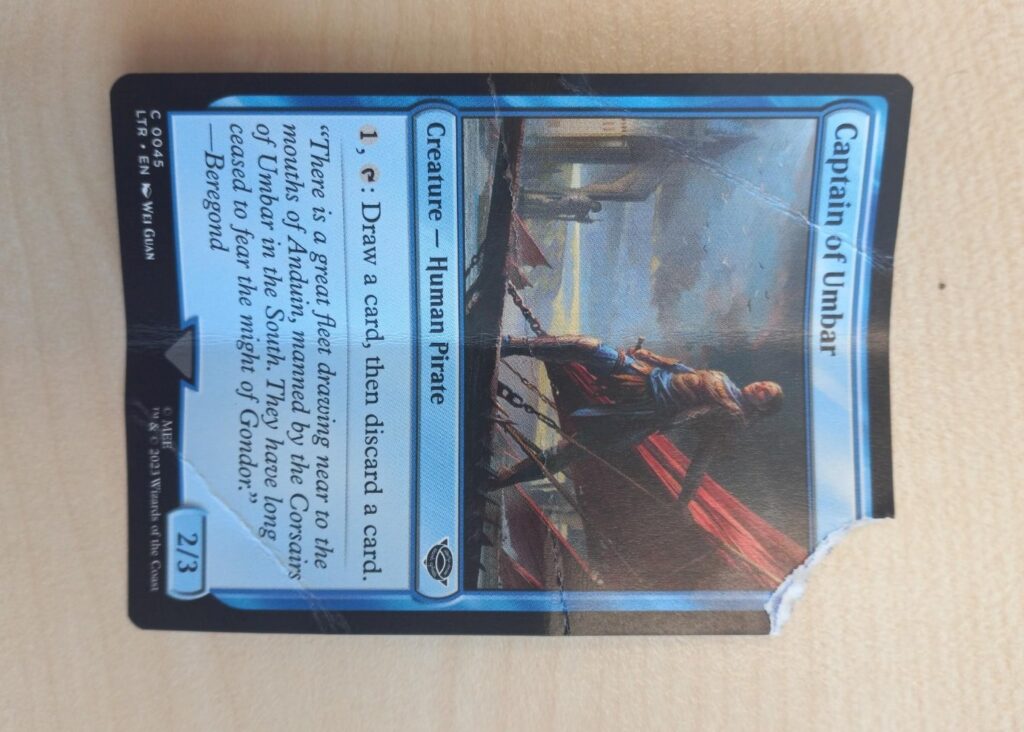
We spent a lot of time building our own dataset, including damaging our own cards. Our purpose from the beginning was to have a grader that would work both on sports cards and trading card games (TCGs), as well as images of different qualities and with different positioning of the cards.
AI Card Grader Consists of Several AI Models
Our card grading solution integrates a number of machine learning models trained on specific datasets. After you upload a photo of a card, the system needs to be able to correctly detect its position. It then identifies the type of the card: a sports card or a trading card game. Another recognition model identifies whether the picture shows the front or back of the card.
After localization & simple identification, the card gets an individual evaluation of its parts. We trained numerous models for individual grading of corners, edges, card surface, and centering, in accordance with grading standards such as PSA or Beckett.
Of course, different types of cards require a different approach, which is why, for example, we have two different models for corners. While sports cards should have sharp corners, TCG cards are typically more rounded.
From the individual grades, we compute a final grade with condition evaluation. Another model is identifying autographed cards. The cards with autographs are generally more valuable.
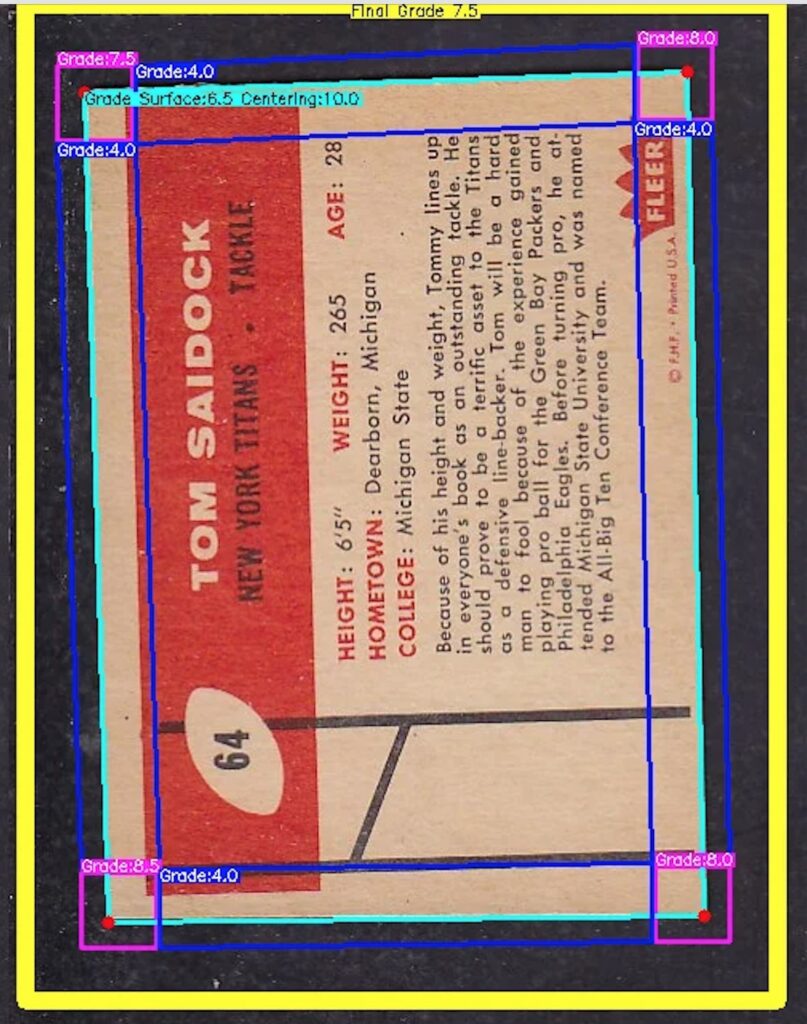
The big advantage is that the output of the card grading is easy to visualize. That is why we also provide a simple image with the report for each graded card. There you can see a detailed grading breakdown for every part of the card.
Limitations of AI and Machine Learning in Card Grading
Of course, both humans and AI can make mistakes. There are some limitations of the system. Estimating card grades from the images requires relatively high-resolution images, with good lighting conditions and with low post-processing.
As a matter of fact, a lot of modern cameras in smartphones are currently not very good at close-up photos. Their sensors have gotten bigger over the years, and their AI is upscaling the photos. This makes them artificially sharp with cartoon-like effects. This can of course corrupt the overall results. However, as I previously mentioned, that is why we train the models on real-life images and gradually improve their performance.
Let’s Get Some Cards Graded Via Our Online API
Modern Basketball Card
We can test our AI grader via Ximilar App. For this purpose, I chose one of the classic basketball cards of Michael Jordan. BGS (Beckett) gave this card a grade of 6 (EX-MT).
Our online grading system assigned this card a final grade of 6.5. The centering is quite off, so the system graded it 6/10. The grading is still not perfect, as it misses the surface by quite a large margin. However, the final grade is quite close to the one received by Beckett.

In the breakdown image, you can see how the system evaluated individual parts of the card. The lines are drawn on the image, so you can see the details of individual grades for corners and edges. We hope that this brings more transparency to the algorithmic grading.
Vintage Baseball Card
Now let’s take a look at an image of a vintage sports card without an autograph. As an example, I chose the baseball card with Ed Mathews.
The final grade that the card receives is 6.0. The average corner value assigned by the system is 4.0 and edges are 7.0. The grade for the surface is 5.5 and the centering is 7.0 (left/right is 36/65 and top/bottom is 38/62).
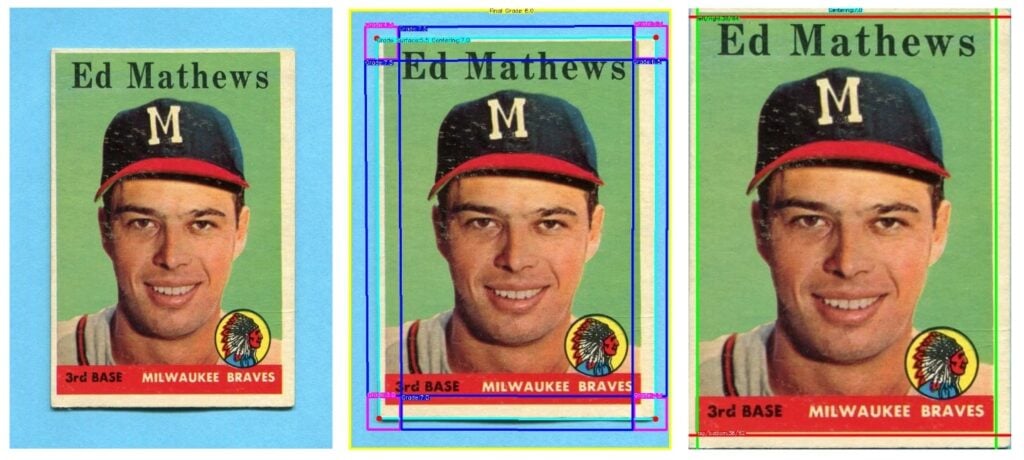
We can take a look at the corners and think whether a professional grader would assign the same values. I personally think that the grade is reasonable. However, getting grades from a single image is hard. We’re also not trying to make the values precise up to decimals (e.g., 4.12453 for the upper left corner). We want this to be an affordable soft pre-grading solution.

Card corners are a bit blurry, so ideally, we would like to have a sharper image. However, we can see that the corners are not in the range of 7–10 grades but rather lower (4-6).
How Do We Compute the Final Grade?
We compute the final grade for corners and edges simply as an average of the individual values. We trained the centering grader according to the Beckett grading scale. It is in our opinion much better (has higher demands) than PSA in this case. So to get 10 points for centering, you need to have a 50/50 ratio – on top/bottom and left/right.
The good thing is, that since we provide values for all parts of the card, you don’t need to use our final grades. You can actually create and use your own formula for computing the final grade.
Card Centering API with AI
Some of our customers would like to compute just the centering of the card. That is why we publish also endpoint for this. It will return you offsets from left, right and top and bottom borders of the card. The offsets are relative and also absolute so you can visualize it in your application. Each API response contains image with visualized centering as part of the output:
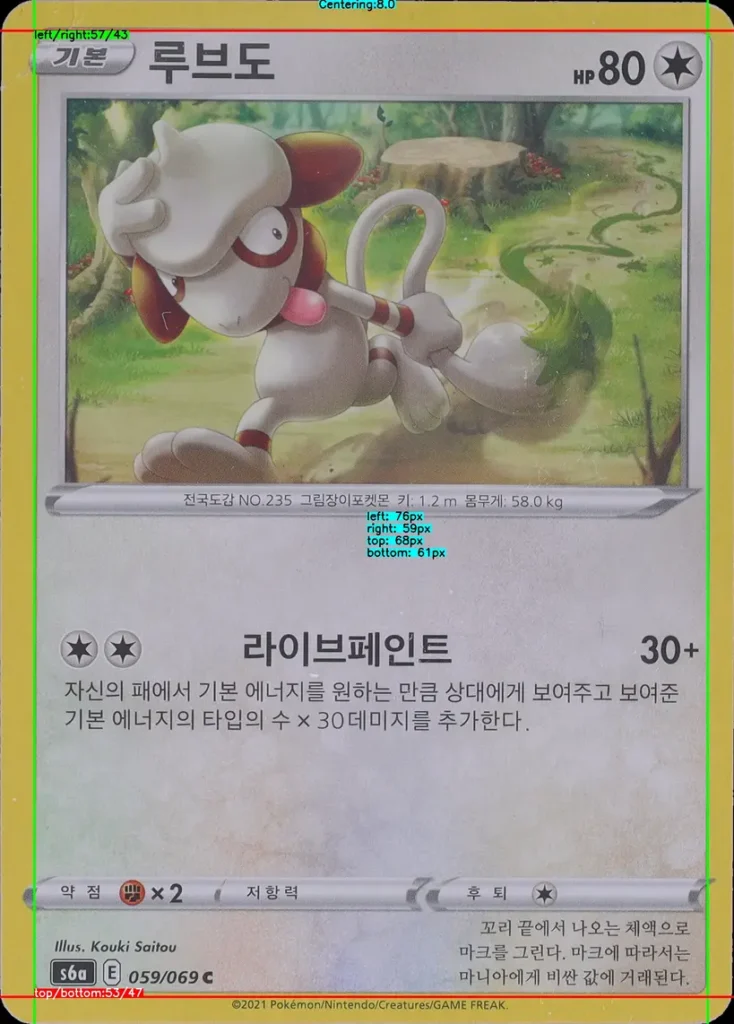
Lightweight Grading, alias Card Condition Assessment
For customers that want to submit cards to online marketplaces and need to know just the condition of the card like Near Mint, Lightly Played, Heavily Played or Damaged we offer an additional endpoint for getting rough condition of your card. Because this endpoint (/v2/condition) is much simpler and also significantly cheaper than our /v2/grade endpoint. It’s great for a massive amount of data and suitable for collector shops all over the world. The API endpoint can be called from your application or we can write your own script that is able to analyze images/cards from Fujitsu scanners (Fujitsu FI-8170). If you also want to have a card identification service, our visual search AI can identify the TCGs like Pokemon, Magic The Gathering or Yugioh! with more than 98% accuracy.
You can ask to return the condition in several different formats like TCGPlayer, Ebay or our own.
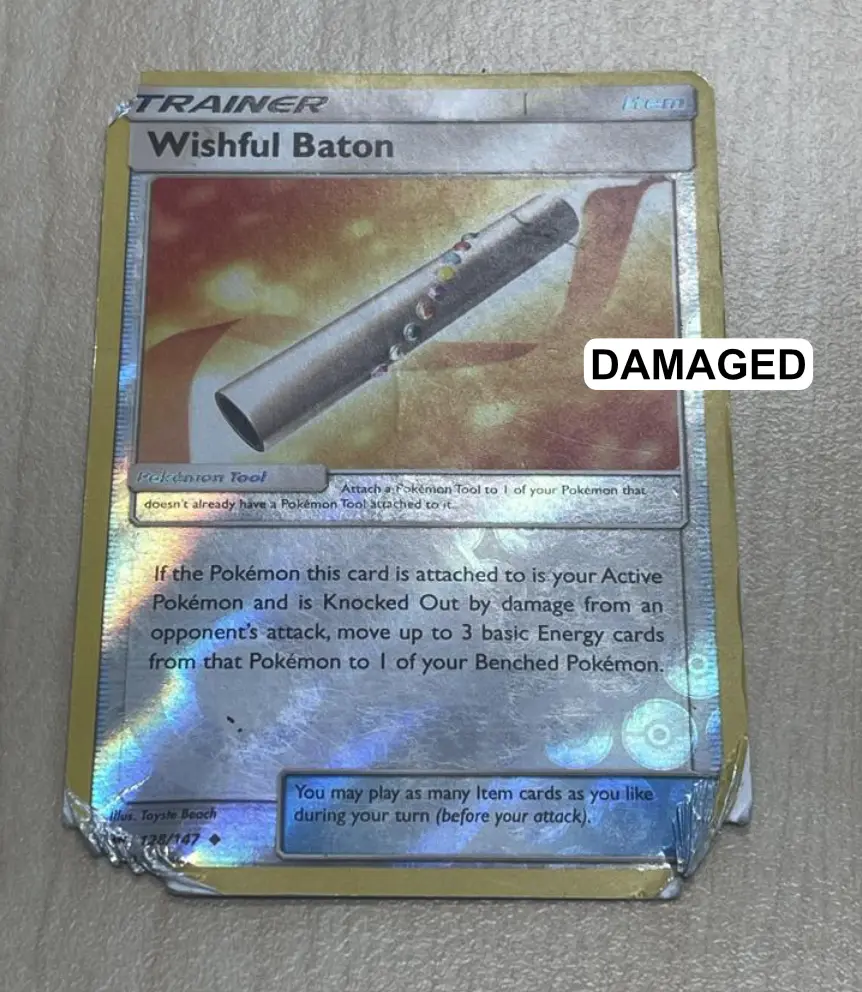
The more about /v2/condition endpoint can be found in our documentation.
How You Can Test Ximilar Card Grader?
To test our online card grader API, you will need to log into the Ximilar App, where it is currently available to users of all plans for testing purposes. We are also currently working on a public demo.
The system is not perfect, neither is the real human grader. It will take us some time to develop something that will be near perfect and very stable. But I believe that we are on the right track to make AI-powered solutions in the collectibles industry more accessible and cheaper.
To Sum Up
The AI card grader is just one of many solutions by Ximilar that the collector community can use. Make sure to check out our AI Recognition of Collectibles. It is a universal service for the automated detection and recognition of all kinds of collectible items.

ONE API TO RULE THEM ALL
AI That Understands Collectibles
Recognize, analyze & grade collectibles, find them in databases and marketplaces. Our API was built by collectors for collectors.
If you would like us to customize any solution for collectors, just contact us and we will get back to you. We created Card Identification, Card Pricing and Card Grading to be the best publicly available AI tools for collectors.
Tags & Themes
Related Articles

Ximilar Now Combines Visual and Text-to-Image Search
E-commerce retailers using our search engine now have access to multilingual text search as well.
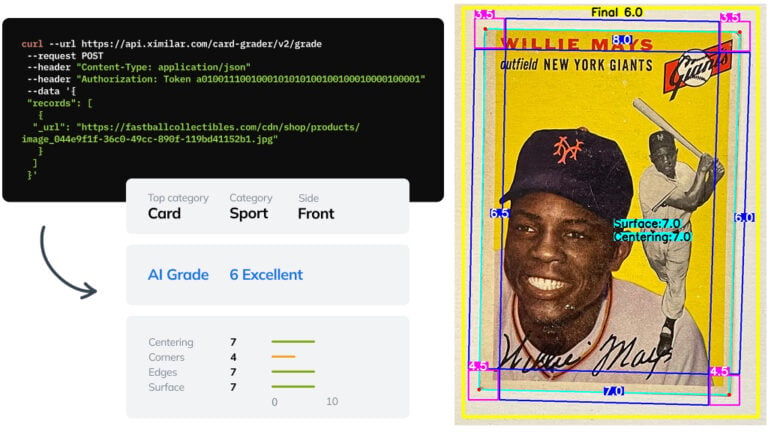
Automate Card Grading With AI via API – Step by Step
A guide on how to easily connect to our trading card grading and condition evaluation AI via API.
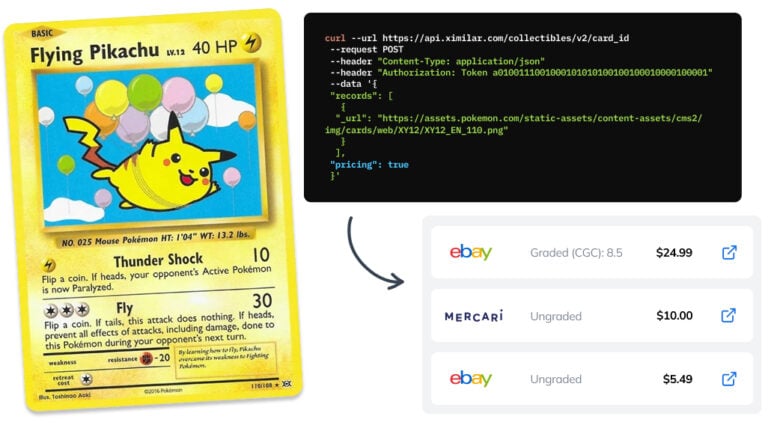
How to Automate Pricing of Cards & Comics via API
A step-by-step guide on how to easily get pricing data for databases of collectibles, such as comic books, manga, trading card games & sports cards.
